The case size of a wristwatch and others decisive factors that influence its comfort on the wrist

Presentation of our BLOG
14 September 2018
Homage watch series: Eterna-Matic Kontiki
11 October 2018WRITTEN BY
ERIK VAN WOERKENS
Hi, I am in my late fifties and have been an amateur watch enthusiast longer then I can remember. My preference goes out to affordable vintage watches, but I also have a number of more recent watches. My preference goes out to vintage watches from brands like Seiko, Omega and Longines. My vintage watches are worn sparingly, mostly at home only. While I will wear mostly newer watches when I am out an about.
This is my first text for Watches83, a small and passionate vintage watch company near Barcelona in Spain. I have bought a handful of vintage watches from Silvia and Sigfrid in the past, and soon discovered they are as passionate for vintage watches as I am. When Sigfrid recently told me about the idea of starting a blog on his website Watches83.com , I wanted to write one for him.
Wristwatches are no longer needed in nowadays life; we have our laptop, tablet and smart phone that tell us the time much more accurate than a mechanical wristwatch can ever do. That is why you really need to be passionate about watches, and need to understand and appreciate the mechanical movement inside, when still wearing mechanical watches.
The topic I wanted to write about is a much debated one: how do I experience my wristwatch?
Sizes of men’s wristwatches come in from somewhere the low thirties (32mm, 33mm, ..) to high forties and sometimes even low fifties.
So what is the right size for you? The answer is not a definite one, it depends on a number of factors. I myself own watches between 33mm (a vintage Calatrava type in solid gold) up to the larger 47mm (Sinn U212 Special Edition for Baselworld 2015). The funny thing is that I prefer smaller vintage watches with 35mm-37mm case sizes, but just as well am I happy wearing larger watches. A lot of sport watches are divers, and as such need to be though and legible. The modern watch case sizes for a men’s wristwatch must be somewhere between 41mm-44mm for sports watches, and 40mm-42mm for dress watches nowadays. Whether you like large or small really is a matter of taste, and I can assure you that your taste will change many times during your watch collecting hobby. Of course there are some guidelines that are generally accepted for wrist sizes like:
- The lugs are not supposed to be wider than your wrist. You can check the lug-to-lug length for this. Women tend to wear men’s watches nowadays, in the end it all comes down to what you feel comfortable with.
- A dress watch ideally slips under the cuff of your shirt and jacket. Thickness of the case is the defining factor here. A lot of chronograph watches are worn as dress watches, but remember they usually are 14mm-16mm thick, which is hindering.
Let me give you my opinion on the deciding factors regarding the comfortability of a wristwatch:
1) Diameter of the case
Oviously the first size you look to in order to get an idea of the watch size. Like said earlier here, most vintage watches will be between 33mm and 36mm in size. A 33mm Patek Philippe Calatrava, an Omega Seamaster 34mm from the 50s-60s. 35mm Longines Flagship, a vintage 35mm Longines Conquest. Some brands experimented with oversize watches in the 50s and 60s: those typically are 37-38mm in size, and those are very much wanted today because of the now ‘more modern’ size. Exceptionally early Rolex Submariner watches already had 40mm. Modern sports watches are generally larger than that: 42mm-44mm. A golden rule is that the watch size should sized in relation to your wrist size. (Just for your information, all case sizes here are measured without the crown.)
As an example I would like to mention my beloved Doxa 1200 which has a diameter of 42.7mm.
2) Lug to lug length
This dimension will decide whether the watch will stick out over your wrist or not. Independent of the case size it is generally accepted that 48mm-49mm is the maximum lug-to-lug length for a watch to be sitting comfortable on the wrist. A small watch with long lugs can wear as large as a larger watch with short or no lugs.
The lug-to-lug size to me is much more important and decisive on the comfortability of your watch as the case size dimension. Some models here to document this: Orion 1 has 38mm case size but a long 49mm lug to lug length (the lugs stick out quite a lot as you see). I own one as well.
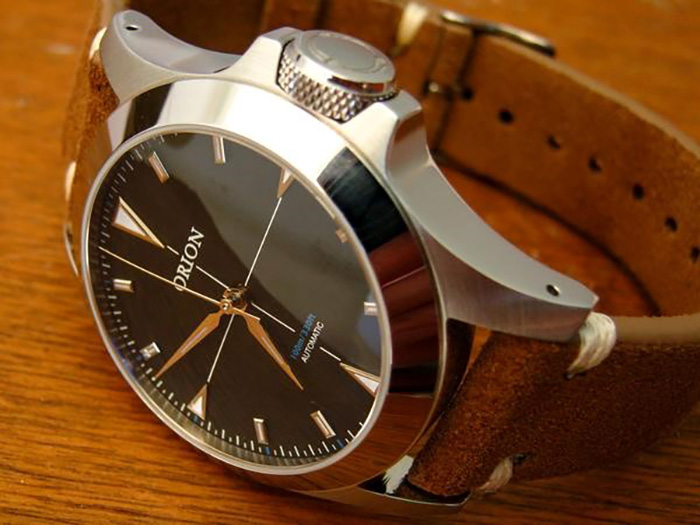
The 38mm Orion 1 has long 49mm lugs (picture: Ben Hughes)
It will wear about the same as a Seiko shrouded diver SBDXxxx which has a 49.4mm case and is 49.4mm lug to lug (aka it has no lugs), albeit this Seiko is 17mm thick.
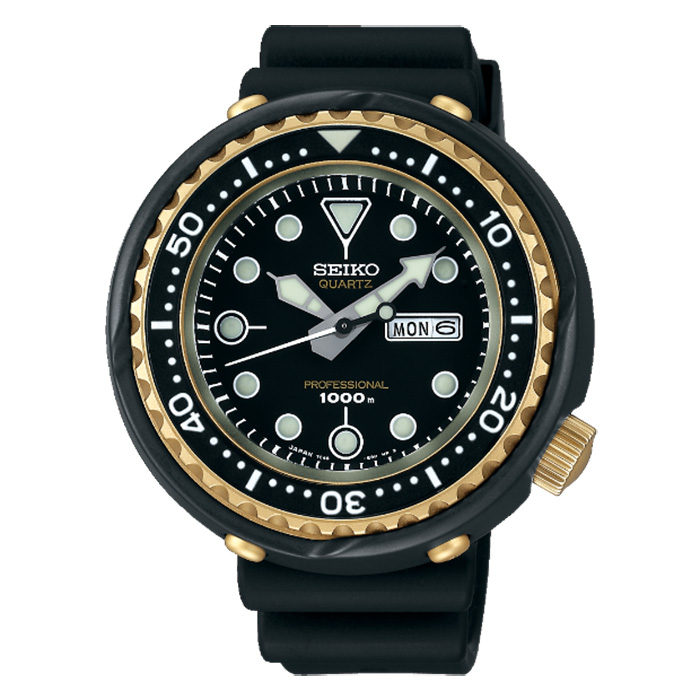
The 49.4mm Seiko SDBXxxx has 49.4mm lug-to-lug length (Source: seikowatches.com)
Another example of a large watch that will wear just fine is the Isotope Watch with a watch case diameter of 46.8mm but the lug-to-lug size is limited to an acceptable 47,4mm (the lugs are integrated in the case, and do not stick out). This is a fantastic looking and wearing watch in my opinon.
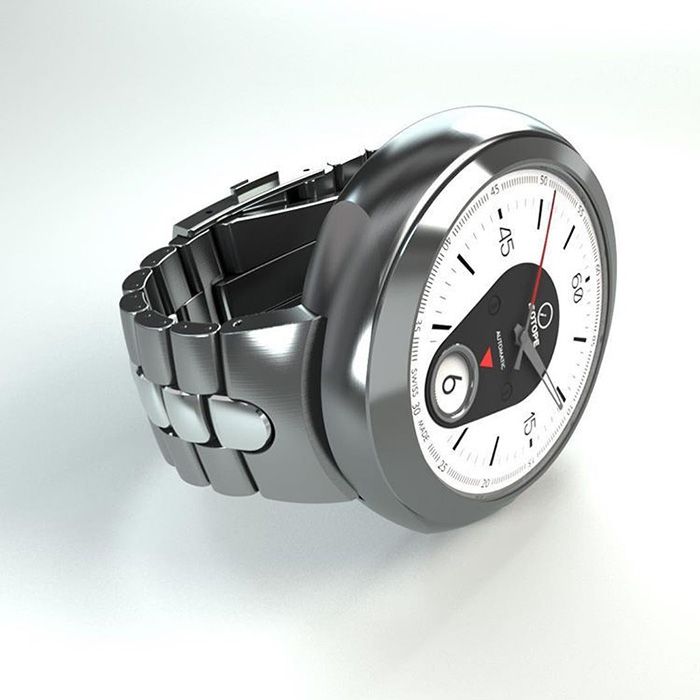
The lugs of an Isotope watch are invisible, embedded in the case 46.8mm case diameter, 47.4mm lug to lug length, and only 12mm thick (picture: Isotope watches)
Just to get back to my example of the Doxa 1200 diver, it has a huge case (42.7mm) but only a 44.6mm lug-to-lug length which makes it sit perfectly on the wrist. Personally I have 2 Doxa’s (sub300 and sub1200), and although I prefer small vintage watches, my Doxa’s are my favorites. Compared to my Rolex Oyster Precision, it has 34mm case diameter, and 42mm lug-to-lug length. Making both sitting almost as large on my 19.5cm wrist. Strange, isn’t it.
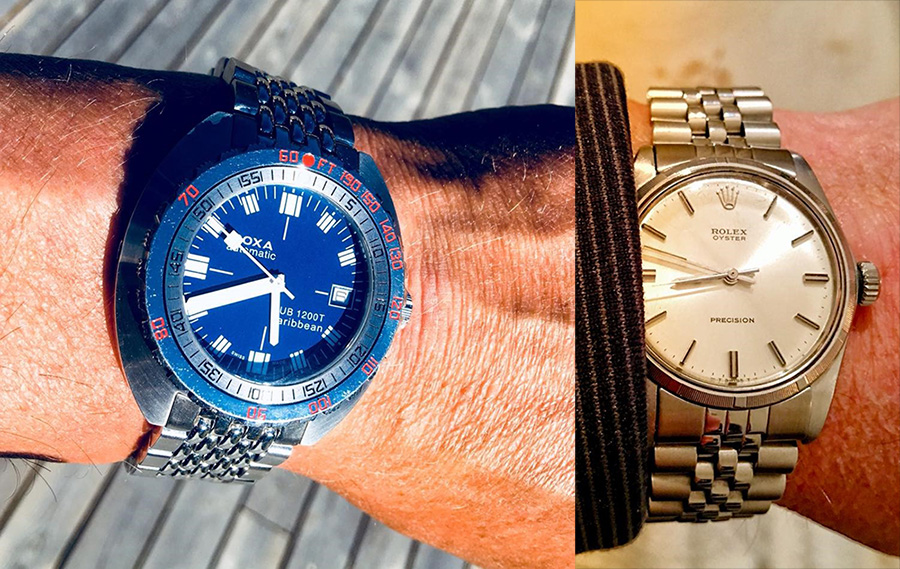
Own pictures 42.7mm (l) and 34mm (r) case diameter. But both have almost the same lug to lug length.
3) Curvature or straight lugs
Do the lugs face down, and hug the wrist, so is this a sign for a watch that will wear comfortable, independent of the case size. As an example let’s show the Orion of Ben Hughes again. The lug curvature make the lugs hug the wrist.
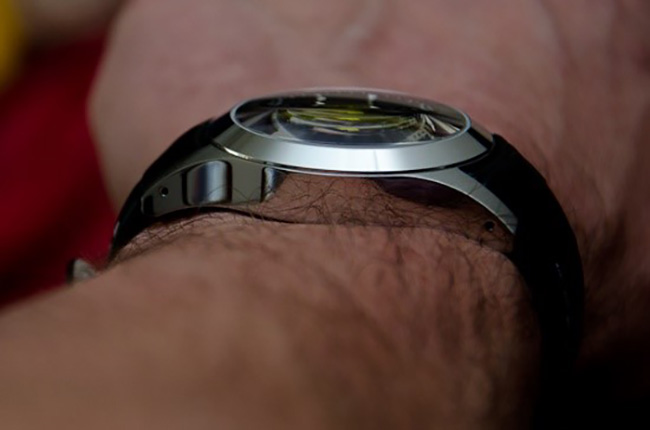
The down-facing lugs of The Orion-1 make it comfortable (picture: Ben Hughes)
On the other hand here is a watch that is only 42mm in diameter but it will wear a lot larger and will sit higher on the wrist: a vintage Omega Speedmaster, with has almost straight lugs.
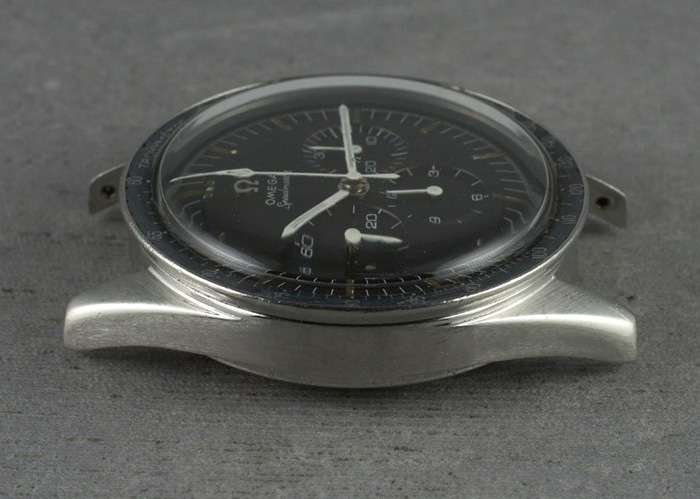
Omega Speedmaster with almost straight lugs (picture Ebay)
4) Metal bracelet, rubber or leather band
The comfortability of your watch will also be influenced by the type of band you wear it on. Wear it on a metal bracelet and the watch will feel heavy and substantial. Wear the same watch on a rubber or a leather strap, and you’ll notice that the watch doesn’t feel that large anymore.
5) Tapering of the bracelet/band
A tapered watch bracelet or watchband will make the watch sitting more comfortable on your wrist. Examples: a 20mm bracelet, tapering to 18mm or even 16mm.
6) Size of the dial
One of the most important items in how you experience your watch, I would even dare say THE most important item! Take a 42mm diver and it will look and wear okay. Take a modern-styled 42mm dress watch however, or even a flieger watch and it will all of a sudden seem too large. How come? Well the dial diameter is a subjective reason for how you will perceive your watch. A bezel takes some millimeters off the size of the dial on a diver, but a watch without a rotating bezel needs to fill up all the space with the dial. That dial suddenly becomes huge compared to the rest of the watch, and there you have it. As an example I will use my other Doxa, a 300 re-issue with only a 29mm dial size. Although it has the 42.7mm case, it really feels small on the wrist. Funny thing is that it has the exact same dial size as my 34mm Rolex OP.
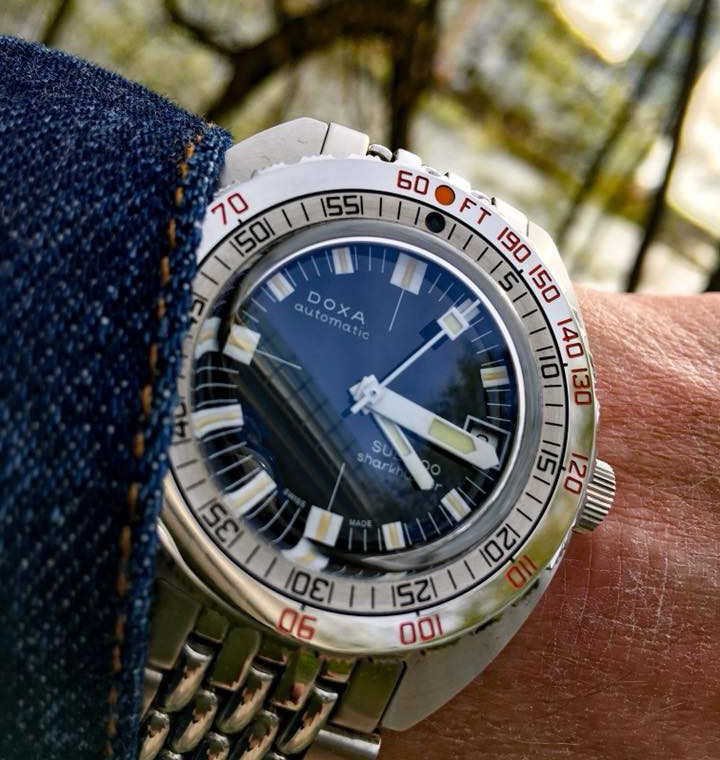
Doxa 300 re-issue: large case but the watch is experienced as small due to its small dial (own picture)
7) Case and back lid shape (deep V)
Take my Seiko SKX, it has a 42mm case and 45.5 mm lug-to-lug length, making it a fairly compact case. Although it is quite substantial (heft) on the wrist, it will not bother me. Why is that? Well the underside of the case has an interesting smaller size than the rest of the case, with something I call a “deep V” for the back lid. The same sort of back lid shape one notices on a Rolex Submariner. This makes it “protrude” into your wrist a bit, making it fix itself, and sit comfortable.
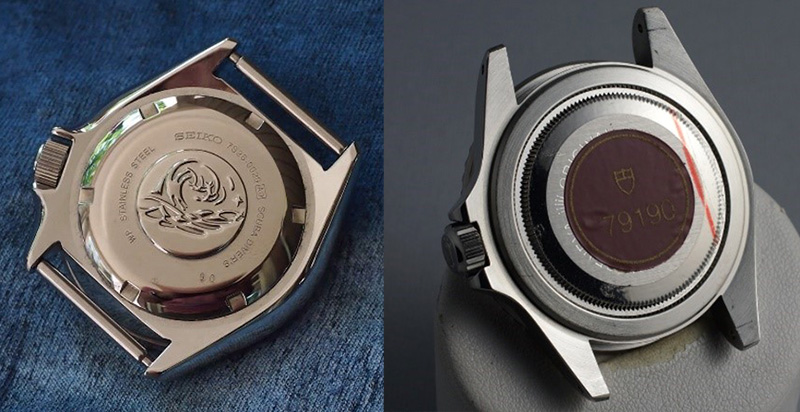
Seiko SKX left / Rolex Submariner right. Pictures: Fratellowatches (l) / hamilton.com (r)
8) Thickness (top heaviness)
The last aspect I wanted to discuss here, is the thickness of a wristwatch and how it influences the comfortability on the wrist. Watch thickness of course is influencing how you experience it, but not so much as other factors in my opinion. Wear a high watch on a rubber or a leather strap, and it will wear a lot smaller. But one will never be able to make a thick watch fit under the cuff of a jacket of course.
So here it is, my opinion on the factors that –in my opinion- influence how you experience a wristwatch sitting on the wrist. I hope you enjoyed it. My own opinion might not correspond with your own. Please leave a reaction below.
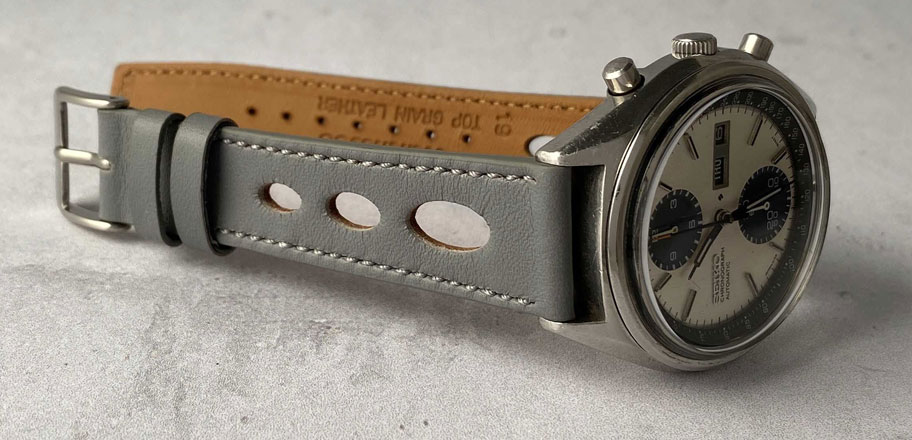
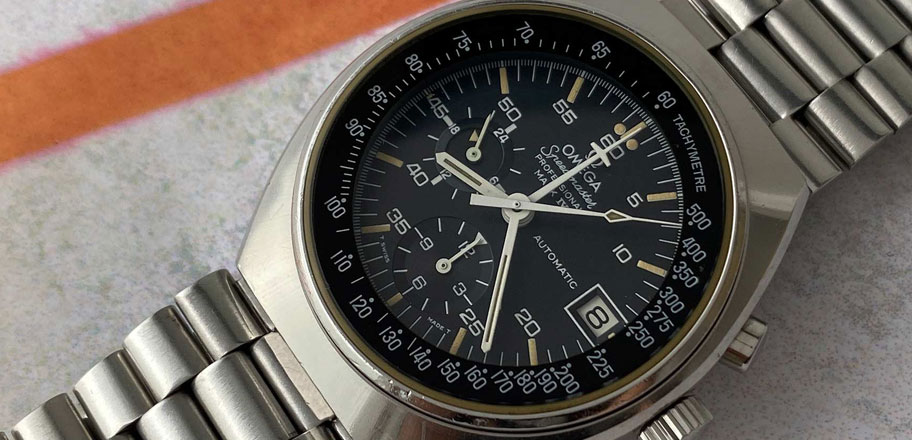
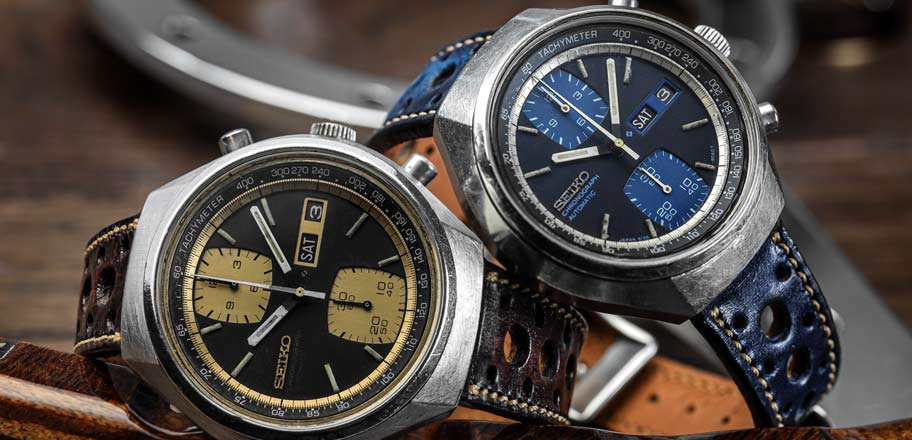
2 Comments
A very thorough write-up, Erik! This should be read by all budding watch enthusiasts to give them guidance on what to expect when looking at (or maybe dreaming of) a watch. Your figures and examples are spot on. Excellent stuff, thank you!
Fantastic article. In my few years of watch collecting and case size sensitive choices, I had not fully understood the size dynamics as I have after reading this. Thank you for the information. Must read for all connoisseurs.